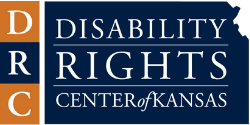Poll Worker Brochure – Accessibility for people with disabilities
Polling Place Etiquette
The language we use and our actions matter. The way we communicate with and interact with people with disabilities affects their level of inclusion.
- Make eye contact and speak to the voter, not their aide or attendant;
- Ask voters with speech or hearing disabilities how they wish to communicate, be flexible;
- Do not touch a voter’s wheelchair, cane, service animal or body.
Be polite but not patronizing. Use ‘People First’ language with terminology like:
- “Person with a disability” instead of “disabled,” “crippled” or “handicapped”
- “Person with an intellectual disability” instead of mentally retarded;
- “Person with a mental health need” instead of “crazy” or “insane”
- Never use phrases like retard, retarded, mongoloid, victim, confined, spastic or brain damaged.
Polling Area
- Voting areas should be set up in an accessible ground level room and kept free of obstacles and glaring lights.
- Voters with disabilities must be accommodated at all stages including accessible sample ballots, instruction modifications (have someone else state or sign their name, etc.);
- The Voting Rights Act outlaws any test or device used at a polling place to ascertain a voter’s competence or intelligence;
- Service animals must be allowed in the polling place.
Voting Booth
Voters with disabilities have a right to assistance from a person of their choice, including friends and personal attendants. They also have the right to deny assistance and to receive extra time in the voting booth. All polling places must have at least one accessible voting machine.
Curbside Voting
Elderly voters and voters with disabilities are entitled to vote from their car. Polling places should have ADA accessible buttons connected to a wireless bell (or some other effective method) to inform workers that someone wants to vote curbside. One poll worker from each political party should accompany the ballot or accessible voting machine to the voter’s car.
Entrance & Paths
- Accessible entrances and paths should be clearly marked;
- Sidewalks and hallways should be 36 inches wide narrowing only briefly to 32 inches where there are permanent fixtures;
- Temporary ramps (no steeper that a 1:12 slope) and with a level landing of at least 60 inches must be offered in place of stairs;
- Doorways must be at least 36 inches wide and should be propped open whenever possible.
Voter Qualification
All registered voters who are at least 18 years old, United States citizens and Kansas residents are qualified voters. Under the Kansas constitution, disability cannot be used as a reason to disqualify a voter … not mental illness, civil commitment, guardianship or any other disability related status.
Accessible Parking
- All polling places must have at least 1 van-accessible spot with at least 96 inches of adjoining access aisle space;
- Polling places with between 26-51 parking spots are required to have at least 1 additional accessible spaces with an adjoining 60-inch wide aisles;
- For each additional 25 spaces offered at the polling place, an additional accessible space with adjoining 60-inch wide aisle is required;
- Polling places must contain an accessible drop off area that is 5 feet in depth and 20 feet long;
- There must be a curb ramp connected to the accessible parking that follows an accessible route to the polling place entrance.
Voting is your right! If you have a problem on election day, call the Election Protection hotline at 1-866-OUR-VOTE (1-866-687-8683), or call DRC Kansas at 877-776-1541
.png)






